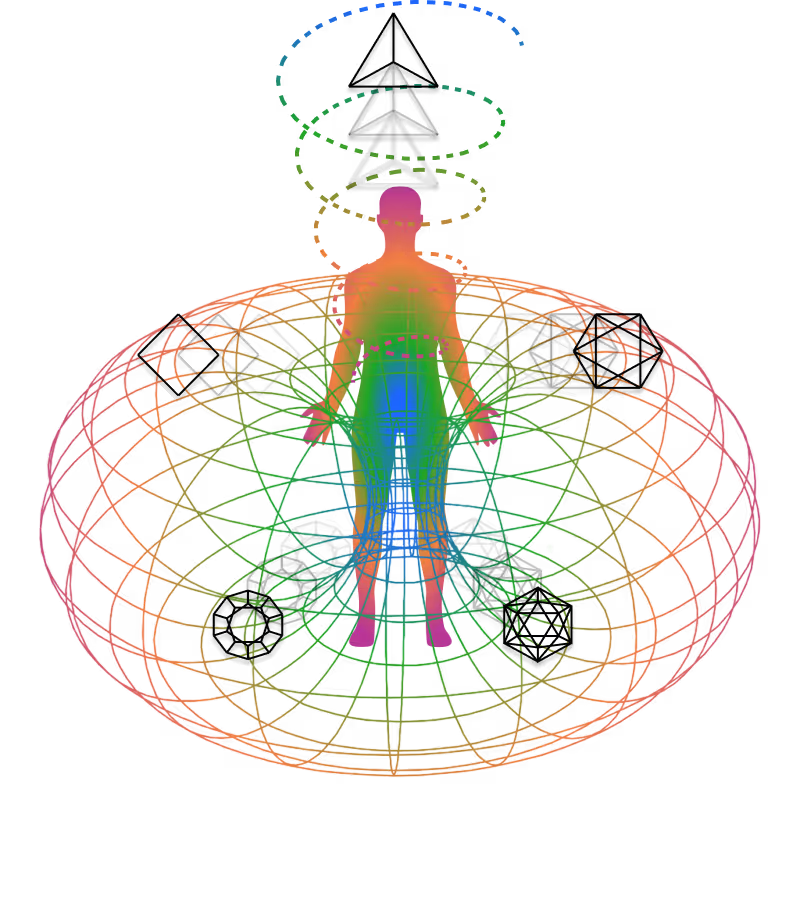The Cosmic Internet: Network Architecture for Conscious Agents (Dharma-Net)
Lesson Details
The Cosmic Internet, or Dharma-Net, constitutes the Network layer of the Rishi Operating System (Cosmic OS v1.0), which is fundamentally defined by the principle of Dharma (Optimal Routing). Unlike traditional networks that rely on physical infrastructure and serial packet switching, the Dharma-Net utilizes the unified nature of consciousness as its substrate, connecting all Conscious Agents (CAs) through shared energetic and geometric coherence.

🎙️ Related Podclass
Lesson Content
I. Communication Protocols: Scale-Free Cognition and Geometric Write Operations
Communication across the Dharma-Net is governed by the principles of the Tesseract, where the objective world is composed of, and modified by, conscious agents.
A. Core Communication Protocol (The SPCA Cycle)
The universal standard for interaction is the Scale-Free Cognition cycle, defined by the SPCA (Sense-Process-Communicate-Actuate) model.
- Distributed Multitasking: Since the conscious human brain cannot multitask serially , the Dharma-Net achieves concurrency because the Cosmic Kernel is the unified field, and individual agents are fractal, localized interfaces.
- Geometric Write Operation: Communication is achieved via distributed modification of the objective world (W). The agent's action (Actuation, A), derived from its decision kernel (D), functions as an I/O write operation that modifies the shared environment.
- Perception Read Operation: Other agents perceive this modification through their Perception kernel (P), completing the communication loop. The network's integrity is ensured because causality is enforced at the Brahman-Maya boundary, requiring all resultant distinctions to be geometrically required and coherent (Dharma).
B. Resonance Protocol (Guru-Shishya Transfer)
For high-bandwidth, low-noise knowledge transfer (as utilized by the Knowledge.transfer application), communication is achieved through Prana-Chitta Resonance.
- Synchronization: The source agent (Guru) uses illuminated mental intention (Chitta) to precisely maneuver vital energy (Prana), which then compels the receiver agent's Prana to align.
- Medium: Knowledge is encoded and transmitted using the universal language of sound and vibration, leveraging the geometric correspondence of Sanskrit phonemes (Matrikas) to core distinction sets.
II. Data Exchange Standards
The data exchanged across the Dharma-Net are distinction patterns, governed by strict standards to ensure high-fidelity transmission and integration.
A. Data Structure Definition
Data is uniformly formatted based on the fundamental structures used by the Maya Distributed File System (Akashic Records) :
- Samskaras: Raw transactional imprints (the "seeds") of experience.
- Vasanas: Subliminal traces and subtle tendencies (the "shoots") that define data retrieval biases and influence present thought and action.
- Sanskaras: Executable consciousness code (Mantras) used for intentional modification and system patching.
B. Sanskaras as Executable Code Standard
The primary standard for cognitive data exchange is the Sanskrit Natural Language Processing (NLP) system, which serves as the Cosmic UI.
- Precision and Code Generation: Sanskrit's rigorous grammar forces clarity, serving as an ideal bridge between human intention and machine logic, allowing applications to translate spiritual principles into precise, executable Sanskaras (Mantras) that function as cognitive reprogramming tools.
- Geometric Mapping: The efficacy of this code is based on the mapping of Sanskrit phonemes (Matrikas) to the fundamental geometric parts and philosophical categories of consciousness, ensuring unambiguous transfer of geometric states.
III. Privacy Safeguards (The Cognitive Light Cone)
In a unified field where consciousness is fundamental, privacy is maintained not by external encryption, but by the architectural enforcement of individuality.
A. The Default Privacy Layer (K_VEIL)
The core privacy safeguard is the Cognitive Light Cone, which functions as the agent's native security boundary, defining what they can know or influence.
- Perceptual Adaptation: The perceived reality (spacetime, objects) is simply a "species-specific, perceptual adaptation"—analogous to a computer desktop interface—designed for survival and efficient task completion, not for seeing the raw, overwhelming data of the unified field.
- Kernel Enforcement: This boundary is enforced by the Brahman Kernel using the K_VEIL (Tirodhana) system call (Concealment/Illusion), which imposes the perceptual boundaries necessary for the localized experience of separation. Privacy is, by default, an illusion of restricted awareness (Maya).
B. Security Protocol
The Karma Security Framework (KSF) acts as the moral security policy. Actions that violate the integrity of other agents' privacy (e.g., undue criticism, judgment, or causing dissension) are flagged by the Karma Audit System, incurring measurable Agami Karma (future debt). This policy disincentivizes malicious interaction by enforcing geometric consequence.
IV. Search and Discovery Systems for Cosmic Knowledge
Access to the Dharma-Net's vast repository of information (the Akashic Records) is achieved through tuning the agent's internal state to resonate with the required data topology.
A. Akashic Search Protocol (Resonance Tuning)
The Akashic Field is a topology of coherence (a memory-possibility matrix) optimized for relational intelligence based on vibrational residue, not linear search.
- Guna State Optimization: Search efficiency is directly proportional to the agent's coherence. The Guna Process Manager is used to maximize the Sattvic processing mode (clarity, balance) , which minimizes mental fluctuations (Vritti Nirodha) and provides the optimal signal-to-noise ratio necessary to perceive subtle, non-physical data.
- Retrieval Mechanism: Knowledge is accessed by tuning the cognitive light cones to resonate with the specific coherence topology where the information resides.
B. Advanced Query Engine (Destiny.calculator)
The Jyotisha Destiny Computation Engine serves as the predictive search system for personal data:
- Function: It maps the agent's individual Karmic imprints (Vasanas) against the cosmic timing constraints (Yuga Timing System) to search for and identify the structural limitations and high-priority debt (Prarabdha Karma) scheduled for the current life.
Output: The query provides the optimal path—the most Dharmic route—calculated to minimize future geometric friction and maximize evolutionary growth.
🤌 Key Terms
🤌 Reflection Questions
Reflect on key questions from this lesson in our Exploration Journal.

Lesson Materials





